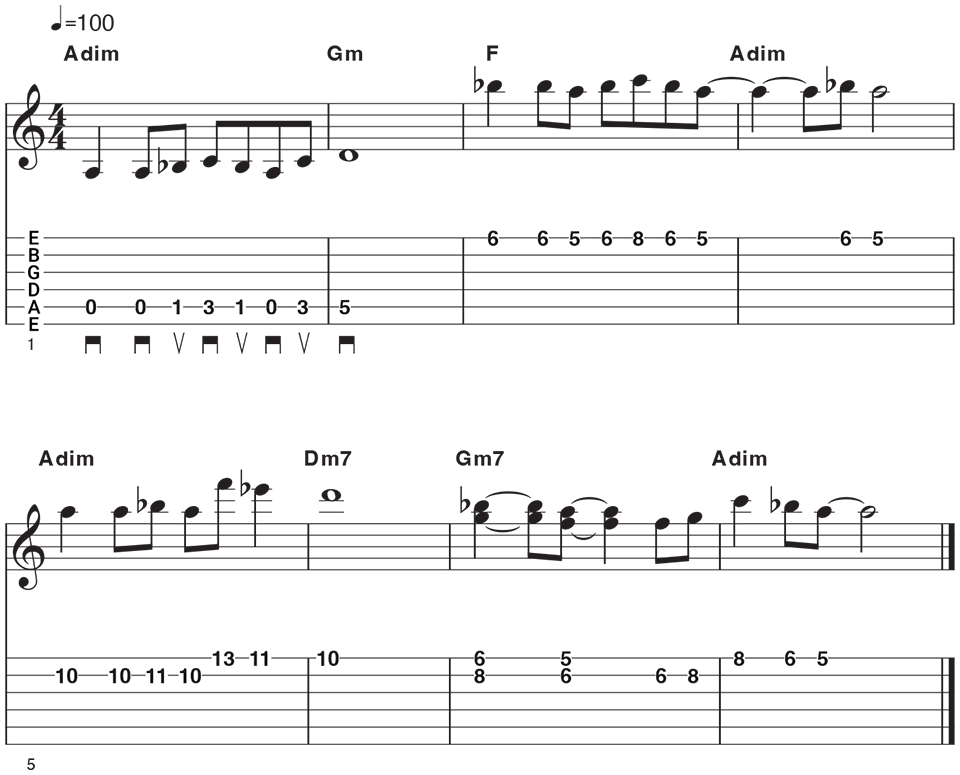The Locrian mode is one of the most sonically challenging sounds in music. And, though built on the major scale, this mode sounds totally removed from its parent scale's bright, happy vibes.
Most often, the mode is used in heavy metal (Metallica's Sad But True being a good example) or as a way to improvise over the m7b5 chord (the ii chord) in a minor ii-V-i progression in jazz – so there's plenty to be gained from adding the mode's signature tense sound into your own playing.
Let's start by comparing the notes and intervals of the Locrian mode with the major scale:
A major notes: A B C# D E F# G#
A Locrian notes: A Bb C D Eb F G
As you can see, nearly every note is different, with the two scales sharing just a root note and a 4th interval (A and D). Now, here are the intervals:
A major intervals: Root, major 2nd, major 3rd, perfect 4th, perfect 5th, major 6th, major 7th
A Locrian intervals: Root, minor 2nd, minor 3rd, perfect 4th, diminished 5th, minor 6th, minor 7th
With nearly every interval being either minor or diminished, you can probably understand why this mode sounds just so darned 'out there'!
As with any mode, the most colourful sounding intervals are the character notes. In the case of the Locrian mode, lean into the minor 2nd and diminished 5th, and, to a lesser extent, the minor 3rd and minor 7th, when soloing.
Check out our video lesson where we'll break it all down and help you get out of your musical comfort zones. Scroll down to find the tab and audio.
A Locrian mode (5th position)
Let's get started with a play-through of the Locrian mode in 5th position. Play the shape slowly so you can appreciate the role of each note. The in-built tension can make things sound ‘wrong’ but over time you'll get used to its sound and what it can do for your licks and riffs.
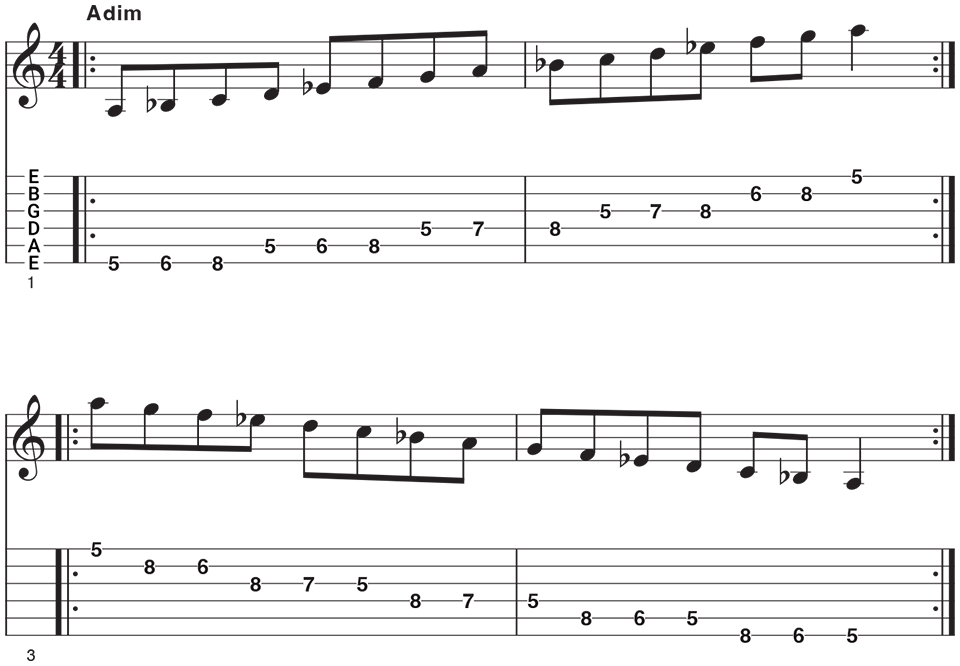
A Locrian mode (pedal exercise)
Play the Locrian mode with a repeating A pedal tone (as we have here) and you’ll hear its tense sound even more clearly. In some ways it’s an easier scale to get a handle on as the dissonant notes jump out immediately, unlike, say, the Dorian mode where the major 6th is a more subtle tension.
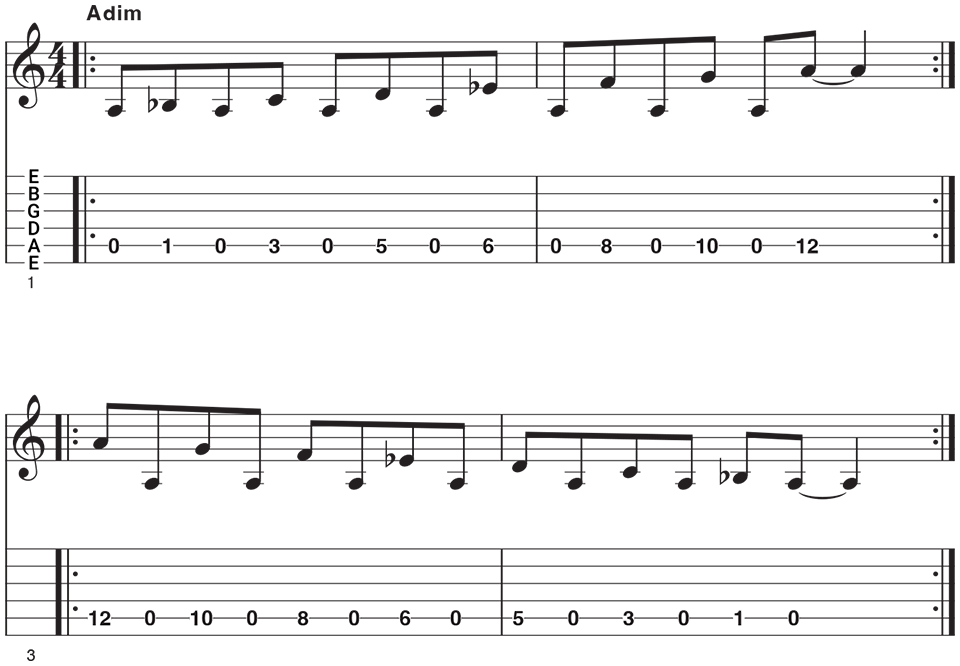
A Locrian mode (diads)
Playing the mode in 3rds against an A drone note reveals its tense, dark sound. Played like this it may seem unwieldy and perhaps even unusable, but remember it’s all about the musical context – and, for this mode, that’s tension throughout.

A Locrian mode (triads)
There aren’t too many well-known songs that use the Locrian mode and when you play it as chords (instead of single notes) you’ll hear why. With a diminished triad as the root chord, any progression resolving back to that root is going to sound pretty wacky!
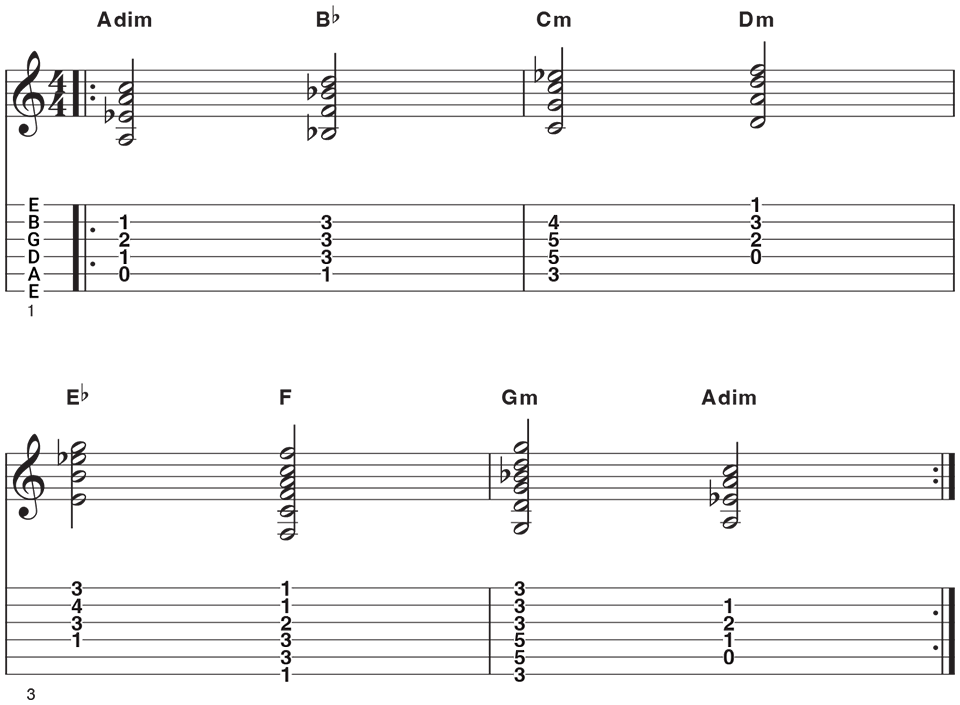
A Locrian mode (7th chords)
The tension ramps up even further when the Locrian mode is played as 7th chords. A real benefit of doing this is becoming acquainted with the m7b5 chord on the i (Am7b5). This chord is very popular in jazz and bossa nova where it generally serves as the ii chord in the minor ii–V–i progression.
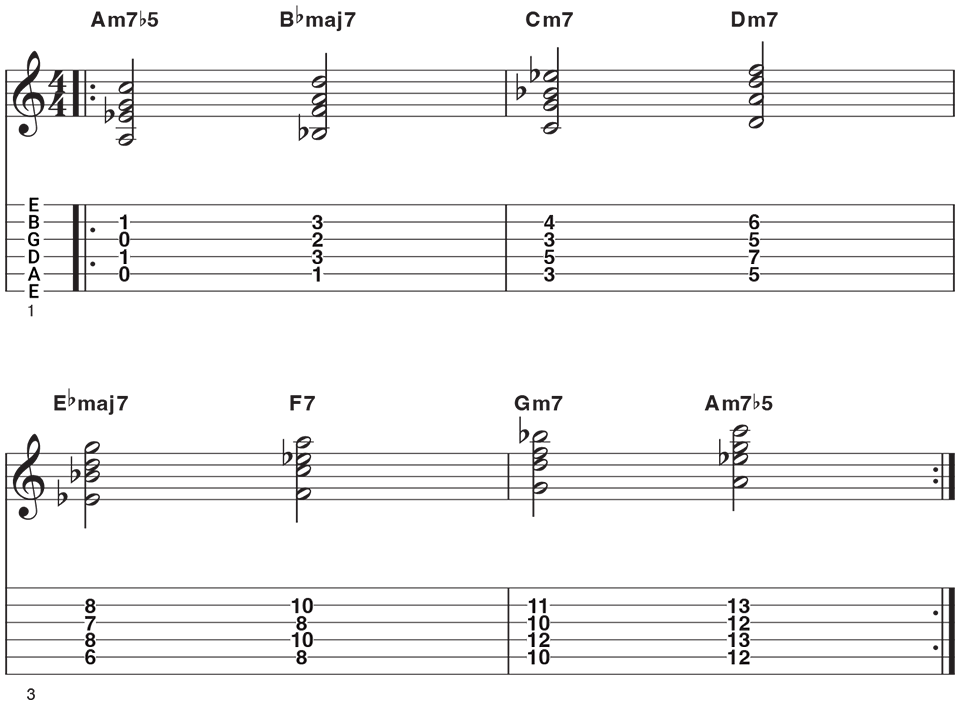
A Locrian mode (arpeggios)
The dense, dark sound of Locrian makes it a great choice for heavier sounds and it’s a great chord and riff-building tool for heavy metal and Latin rock – though the Phrygian mode is perhaps a little more commonplace. Our arpeggio example uses simple chords from the Locrian mode with a heavy rock sound.
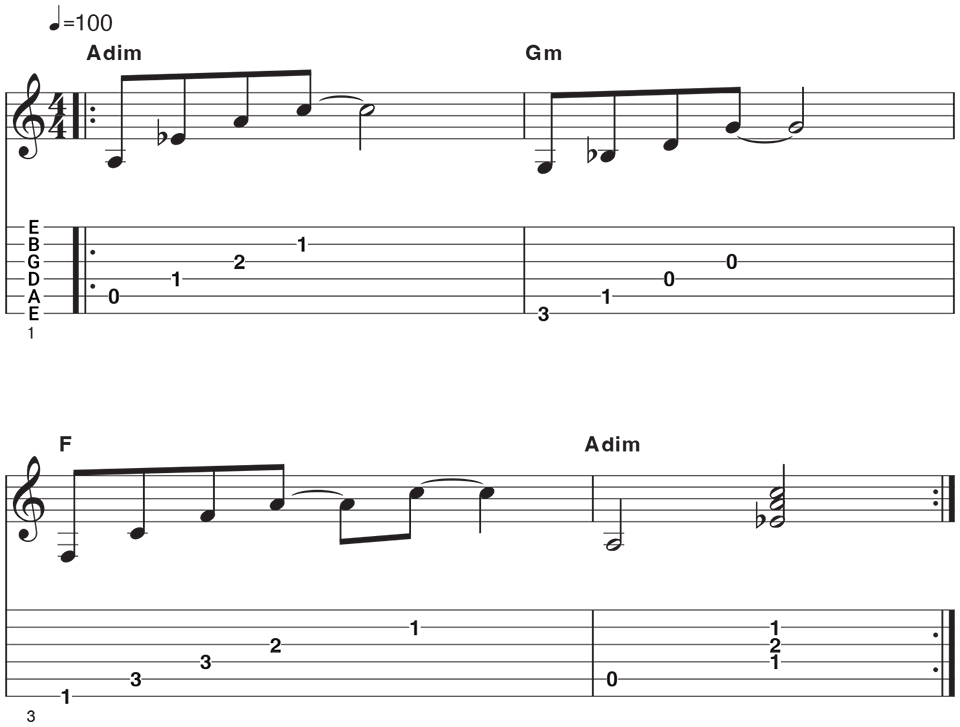
A Locrian mode (rhythm guitar)
The diminished triad on the root chord is a great sound for when you need tension. Play the Adim chord as a simple arpeggio as in this example and you can draw the tension out for the duration of the bar. You may find diminished chords voice better on the higher strings though. Their in-built dissonance can sound muddy when played in the bass range.
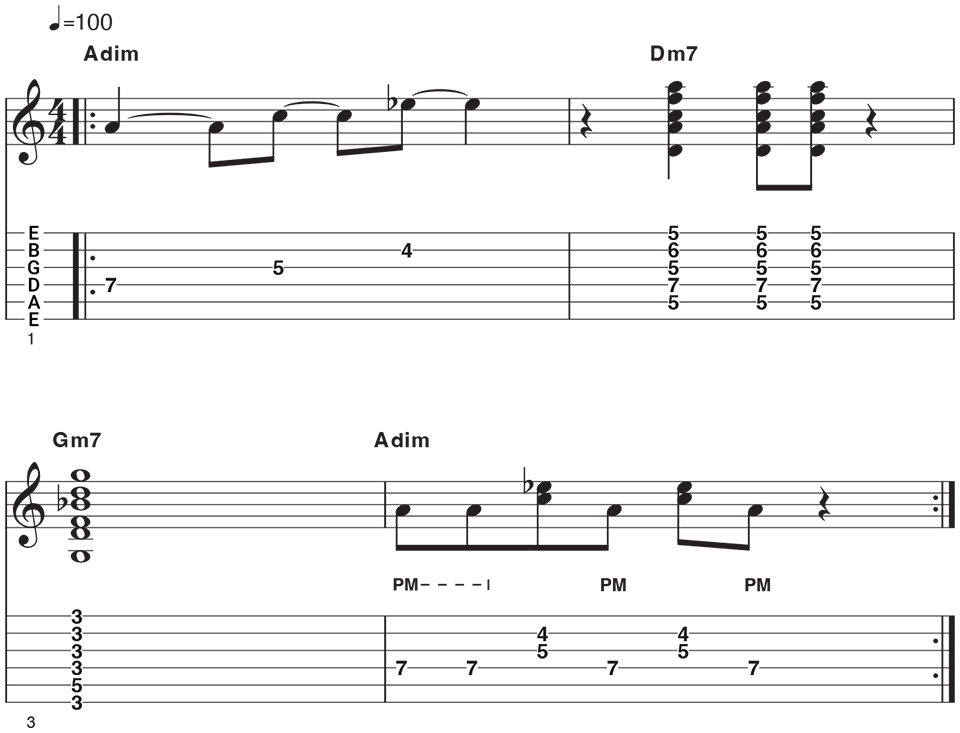
A Locrian mode (lead guitar lick)
Like the Phrygian mode, much of the Locrian tension comes from its minor 2nd degree – and that’s emphasised at the start of this solo. You’ll also get the real sound of the Locrian mode by targeting the diminished 5th, Eb, over the Adim chords.
